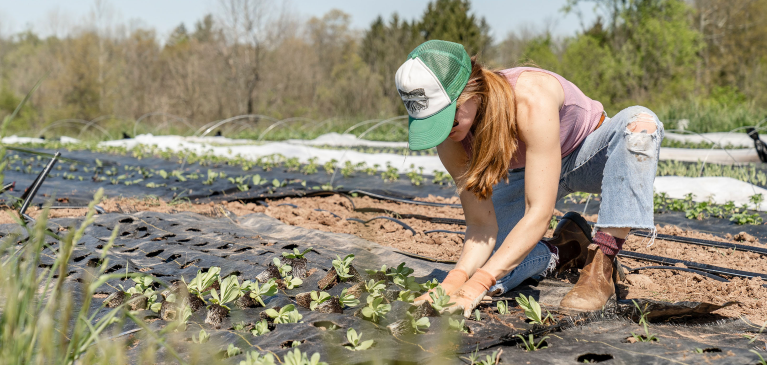
When it comes to agriculture, the ever-changing market is a fierce-enough industry to compete in, let alone if you are a beginning farmer just starting out. Entering the industry looks different for each producer, but there are several industry-wide challenges that are common obstacles for beginning farmers.
Here are just a few challenges beginning farmers should keep in mind.
- Capital-Intense Entry. Like getting started in any business, there is a start-up cost. Unfortunately, the cost to break into the agriculture industry is exceptionally high, and a cost that will likely only continue to increase.
- Increasing Land Prices. One reason for the expensive price tag of starting a career in farming is the cost of land. Since 2020, land prices have continued to climb higher, making entering the industry for beginning farmers an even greater challenge.
- Access to Land. Even if we weren’t seeing a spike in cost per acre of land, finding land to farm, whether that be to lease or purchase, is an increasingly difficult task.
- Lack of Business Knowledge. The same passion for working outside doesn’t always carry over to the financial and business planning side of a farm operation, leading to unrealistic goals, inaccurate projections and below expectation results.
- Limited Down Payment. Often times, young producers don’t have the cash to put down a large down payment, especially when the cost is underestimated.
Do’s and don’ts for beginning farmers
Whether you’ve dealt with one or all of these common challenges, it’s easy to see why many beginning farmers struggle to get started the first few years of farming. To help you navigate this growingly competitive industry, keep these do’s and don’ts in mind to help you break through the barriers as a beginning farmer.
1. Don’t underestimate your start-up costs.
One of the biggest challenges many new and young farmers face is not having the necessary down payment to secure an operating loan or financing for a land purchase. More often than not, more capital is needed than what was expected.
Generally speaking, beginning farmers are young in their careers and do not have money saved up to put 20 to 30% down. With the recent prices of real estate soaring, buying property in today’s market requires even more capital to get started and having an accurate estimate of the start-up costs will be more beneficial in the long-run.
2. Do work with your financial services officer.
Financial literacy can also be a common issue with beginning farmers seeking financing from GreenStone. Sitting down with your trusted financial services officer to walk through your business plan can change the trajectory of your farming operation for the better.
We’re here to help producers better understand their farm finances while setting attainable goals. Although producers generally know what they hope to accomplish, they can struggle to convey the message of how they plan to achieve their business goals.
Turning to your financial services officer for business plan guidance early on can help prevent beginning farmers from underestimating their start-up costs.
3. Don’t overestimate your expected net income.
While the cost of starting a farming operation is often underestimated, the expected revenue the first few years is usually overestimated. This is a mistake stemming from assuming greater yields than actually produced or discounting the significance of the market.
Knowing what your operation’s bottom-line is and having realistic future revenue projections can help prevent the stress from ending in the red unexpectedly.
4. Do set realistic business goals.
When meeting with your financial services officer, bring your business plan to review the goals for your farm. Keep an open mind in case any pre-determined goals need to be adjusted or scratched completely. Remember that slow growth is better than zero growth and setting SMART goals (specific, measurable, attainable, realistic, timely) can lead to long-term success.
5. Don’t attempt it alone.
With the endless resources available through various articles, videos, workshops, conferences, newsletters and yes, even your financial services officer, if you have a question, chances are an answer is already waiting for you. Prior to making any major changes on your farm, utilize your resources and your network to be confident in your decision.
6. Do find a mentor.
When it comes to starting any business, having someone in your corner to turn to for advice can be one of the most helpful resources you’ll ever need. Having someone who has already experienced what you’re going through and is willing to share lessons they learned is invaluable.
Not sure where to find a mentor? Check out GreenStone’s CultivateGrowth Mentorship program; applicant reviewing begins in July for the 2022-2024 program. For more information, visit the GreenStone Cultivate Growth website.
*Written for the Michigan Farm News Dollars and Sense Column
Tags
Request for Information | Apply Now | Young, Beginning & Small Farmer - Financing Options


